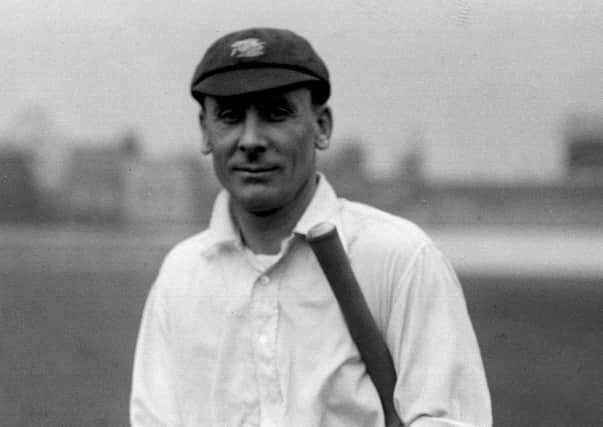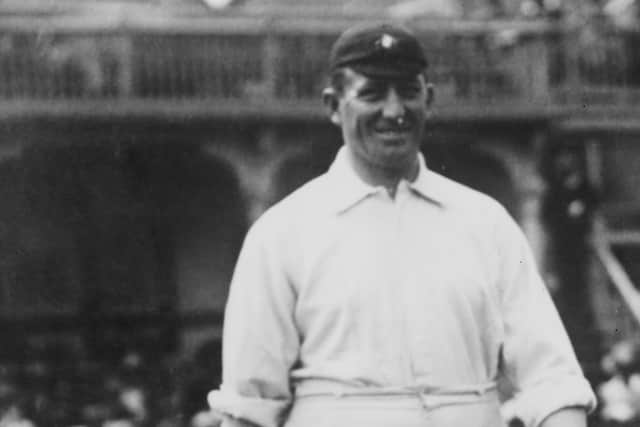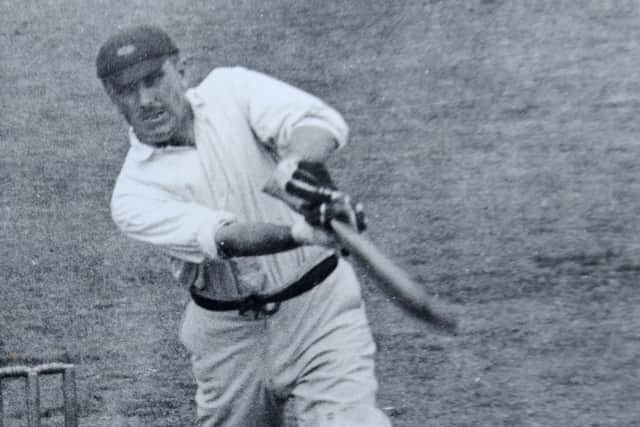When England’s cricketers entered protective Ashes bubble 100 years ago


It seems as good an excuse as any to cast our gaze back exactly 100 years to the 1920-21 Ashes series (ah yes, I remember it well…).
In the corresponding week in 1920, the old rivals lined up at Sydney Cricket Ground for the opening game in the first Test series after the First World War.
Advertisement
Hide AdAdvertisement
Hide AdAustralia won by 377 runs, the first in a sequence of eight successive victories against England, whom they whitewashed 5-0 in that series before going 3-0 up in the return rubber in England the following summer, when the final two Tests were drawn.


Wisden Cricketers’ Almanack summed up England’s 1920-21 campaign Down Under in two words – “a disaster”.
“Never before in the history of English or Australian trips since Test matches were first played had one side shown such an overwhelming superiority,” observed the 1922 edition.
“As the news came to hand of defeat after defeat people thought the Englishmen must be playing very badly.
Advertisement
Hide AdAdvertisement
Hide Ad“Not till the Australians came here in the (1921) summer and beat us three times in succession on our own grounds did we fully realise the strength of the combination that had set up such a record.”


The Almanack added, with reference to the resumption of Ashes cricket after the conflict, that “the MCC were very doubtful as to the wisdom of renewing the interchange of visits so soon, feeling that English cricket had not had time to regain its pre-war standard, and it will be remembered that they declined a pressing invitation to send out a team in the winter of 1919-20.
“However, in face of Australia’s keen desire, they could not insist on further delay.”
Small wonder that the Aussies were keen to “get it on”, as they say. The side captained by Warwick Armstrong, aka ‘The Big Ship’, a 22-stone giant of a man with matching personality, was too strong for that taken Down Under by Essex all-rounder Johnny Douglas, who also played football for England and won an Olympic boxing gold medal to boot.
Advertisement
Hide AdAdvertisement
Hide AdOne wisecracks about “infectious diseases” threatening the resumption of hostilities between the two countries next winter, but an infection aboard ship on England’s voyage out actually did pose a passing threat to the start of the 1920-21 series.
On arrival in Fremantle, the MCC party were taken into quarantine as a member of the ship’s crew had died from typhoid fever.
For about a week, Douglas and his men were housed in a group of army huts in Perth – the 1920 equivalent, perhaps, of the biosecure bubble.
Jack Hobbs, the brilliant England opening batsman, used the time to play a practical joke on Cecil ‘Ciss’ Parkin, the Lancashire off-spinner, who disliked snakes and reptiles (hey, don’t we all).
It happened like this…
Advertisement
Hide AdAdvertisement
Hide AdHarry Howell, the Warwickshire fast bowler, discovered a dead iguana near to the army huts and brought it into Hobbs’s hut.
Knowing Parkin’s distaste for such creatures, Hobbs thought it would be a hoot to place the corpse beneath some clothing on Parkin’s bed.
According to Patsy Hendren, the Middlesex batsman, when Parkin found the offending item “he did a correct imitation of a rising rocket”, although Hobbs – having long since fled the scene of the stunt – was never suspected.
Such japery was out of keeping with the rest of the tour as England were flogged from pillar to post.
Advertisement
Hide AdAdvertisement
Hide AdAfter losing the first Test in demoralising fashion, they lost the second by an innings and 91 runs in Melbourne, the third by 119 runs at Adelaide, the fourth by eight wickets in Melbourne again, and the fifth by nine wickets back in Sydney.
It was in that final match, which gave Australia what was then an unprecedented whitewash, that Yorkshire’s Rockley Wilson played his one and only Test.
The 41-year-old, who was one of the best amateur slow right-arm bowlers of the period, did not disgrace himself with figures of 14.3-4-28-2 and 6-1-8-1, although he was dismissed for five runs with the bat in both innings.
A clever fellow, who for many years was a master at Winchester school, Wilson’s biggest impact on the series was a controversial one, Wisden reporting that “a good deal of friction was caused by cable messages sent home to the Daily Express by Mr ER Wilson.
Advertisement
Hide AdAdvertisement
Hide Ad“This led to a resolution passed at the annual meeting of the Marylebone Club in May deprecating the reporting of matches by players concerned in them.”
One of Wilson’s pupils at Winchester was a certain Douglas Jardine.
Asked by a journalist for a comment on England’s chances ahead of the 1932-33 Bodyline series, Wilson presciently replied: “He might well win us the Ashes, but he might lose us a Dominion.”
Wilson was one of four Yorkshire players on the 1920-21 Ashes tour, along with wicketkeeper Arthur Dolphin (who made his solitary Test appearance in the fourth match in Melbourne), pace bowler Abe Waddington (whose two Test appearances included that game and also the opening Test in Sydney), and the legendary all-rounder Wilfred Rhodes.
Advertisement
Hide AdAdvertisement
Hide AdRhodes opened the batting with Hobbs in four of the five Tests but, like most others, he had a poor series, scoring only 238 runs in the five games at 23.80 and managing just four wickets at 61.25.
Hobbs was the only member of the touring party who could hold his head high, the Surrey star being far and away England’s best batsman with 505 runs at 50.50, including centuries in the second and third Tests.
Although reasonably strong in the batting department, England’s bowling was weak and inexperienced; Parkin, the leading wicket-taker, took his 16 victims at an exorbitant 41.87.
In contrast, Australia had two gun bowlers in the form of leg-spinner Arthur Mailey (36 wickets at 26.27, including career-best Test figures of 9-121 in the fourth match in Melbourne, which are still Australia’s best figures in a Test innings).
Advertisement
Hide AdAdvertisement
Hide AdJack Gregory, one of the finest pace bowlers of the day, took 23 wickets at 24.17, while Australia had five players who averaged even more than Hobbs with the bat.
High up in their number was captain Armstrong (464 runs at 77.33), to go with nine wickets at 22.66.
Armstrong defied periodic attacks of malaria to score three centuries in the series; his preferred method of self-medication for that condition was a good drop of whisky.
England’s captain, Douglas, had a tough time in comparison.
Although second to Hobbs in the averages with 354 runs at 39.33, his captaincy was viewed as uninspiring and his batting wearisome, his initials JWHT Douglas earning him the nickname among the Australian public of ‘Johnny Won’t Hit Today’.
Advertisement
Hide AdAdvertisement
Hide AdSupport The Yorkshire Post and become a subscriber today. Your subscription will help us to continue to bring quality news to the people of Yorkshire. In return, you’ll see fewer ads on site, get free access to our app and receive exclusive members-only offers. Click HERE to subscribe.